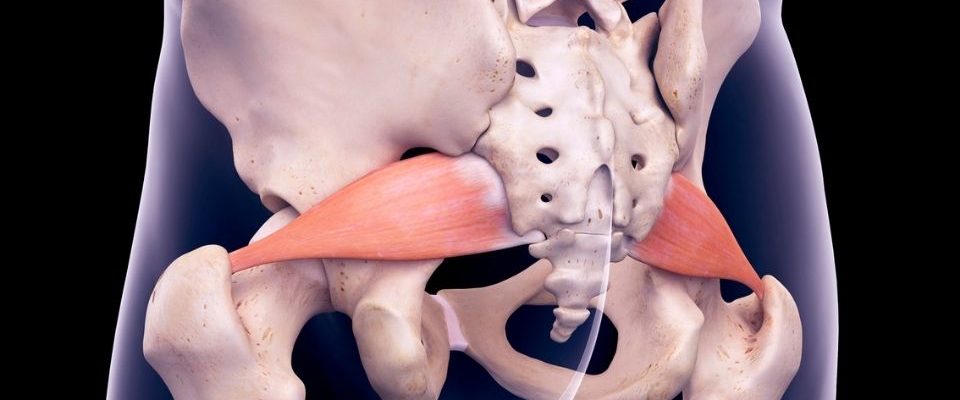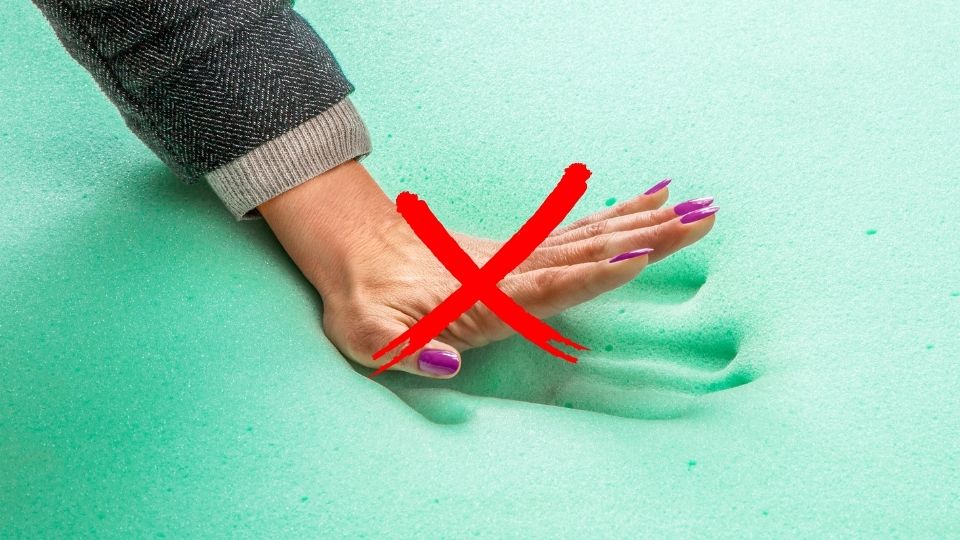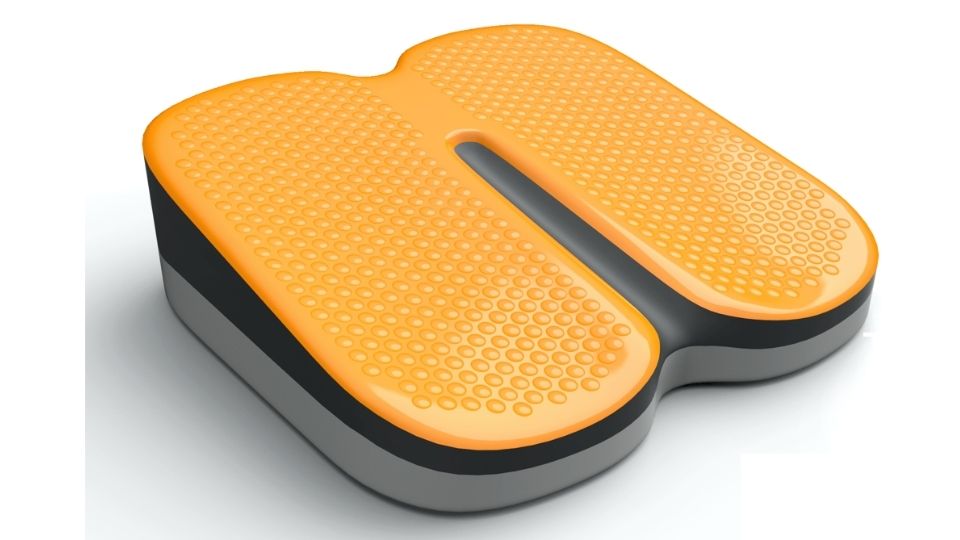How to Sit with Piriformis Syndrome
Piriformis syndrome is a condition that results from an inflamed piriformis muscle, which causes pain. The symptoms can be quite intense at times and often makes sitting uncomfortable. This blog post will discuss what causes the inflammation in this small muscle near your sacrum and hip joint as well as how to sit with it depending on its severity of symptoms.
As a general rule, the best way to prevent an exacerbation of piriformis syndrome is by sitting upright with both feet on the ground, hips higher than knees, and staying as upright as possible. By doing so, you can release pressure on your piriformis muscle, which can cause you pain.
The internet contains a great deal of reliable information but doesn’t cover everything. Let me explain why you should read this post. For almost 30 years, I’ve worked with patients (like you!) practicing chiropractic; I’m also a trained ergonomist; I’ve published a book on posture; spoke on this subject on national tv; engineered several solutions to improve comfort while sitting, and had a successful Kickstarter campaign for a posture correcting device. So, I’m confident that I can impart some practice and useful advice!
Here are three primary reasons why you should read what I have to say about standing all day: 1) I have practical experience helping people with posture and back pain for many years; 2) My ergonomic training gives me insight into how the body is meant to move and be positioned throughout the day, and 3) I’ve personally created products that improve comfort while sitting and standing. To get the most out of this post, keep an open mind and consider the evidence I present fairly. By the end of this post, you should have a much better understanding of how to sit with piriformis syndrome – and how to make a decision that’s best for you.
How Does Piriformis Syndrome Happen?
If one muscle contracts, then the opposing muscles naturally release and movement is allowed to occur. As an example, when a person has too much pressure on their hip flexor, they will begin experiencing pain or discomfort in their piriformis (a small muscle near your gluteus maximus) because it is compensating for all that additional work.
The piriformis is a muscle in the butt, and when it becomes too tired or overworked, its spasms can have an adverse effect on your sciatic nerve. Luckily for you, we’ve got plenty of seating positions to target hip flexors as well as this pesky little guy!
Piriformis syndrome can occur during several movements as the lower body depends on this muscle. If those nerves are over-activated and compressed for a long period of time, they can cause pain, even if that’s not their typical area of injury.
All Day Comfort & Support
Piriformis syndrome won’t go away on its own. Constant sitting and rotating your legs away from your body aggravate the condition. Understanding how to sit correctly can prevent this pain-causing injury from worsening.
Symptoms of Piriformis Syndrome
I have discovered that sciatica is the primary symptom of piriformis syndrome. Sciatica or sciatic nerve pain is often referred to as this type of pain. The piriformis syndrome can also lead to the following symptoms:
- Pain in the buttocks
- You have aching thighs
- Climbing stairs causes pain
- Discomfort sitting down
- A restriction of hip joint motion
- After prolonged sitting, walking, or running, piriformis syndrome symptoms may feel worse, whereas after lying down they may feel better.
How to Prevent Piriformis Syndrome Pain When Sitting
It can be unbearable to sit with piriformis pain. This condition may affect your sitting environment, so take the following suggestions into consideration:
-
- Start by getting up and moving every twenty minutes or so to combat this.
- You can use a rolled-up towel placed on your lower back to provide support if lumbar support is not available.
- Keep your feet flat on the floor while elevating your seat. If you need one, use a footrest.
- I always get positive feedback when I advise people to keep their hips above their knees. The pelvis and spinal muscles, which are naturally relaxed, will tilt forward naturally.
- You might also want to increase your chair’s width, as getting feedback on this tip is great. The majority of ergonomic chairs have an adjustable seat depth. Here you need to make sure your knees aren’t closer than three fingers to the edge of the seat.
- Stretching your legs while seated can also help relieve sciatica pain. When you sit, make sure you extend and contract your legs. Regular stretching breaks are a good idea during the day.
- Your desk should have enough space under it for you to move around. Files, cords, printers, and other items can be stored elsewhere if they’re cluttered under the desk.
- You must remember that sitting may not be the best option for every sciatica sufferer, so figure out what works for you.
- Usually, sciatica pain can be soothed by alternating between sitting and standing. The two positions should be switched as often as necessary, though beware of sitting at a low angle. Standing from a low seated position may be more painful.
Black Friday: 35% Off Today
Typical Delivery 1-3 Days
Does Sitting Make Piriformis Pain Worse?
If correctly done, not always. The right seat can reduce sciatica pain drastically, provided you stand and move while sitting. For a healthy posture, I recommend moving frequently between sitting and standing positions. Standing or sitting for extended periods is not recommended since prolonged standing or sitting can lead to cold muscles.
Is It Better to Walk or Be Seated to Alleviate Piriformis Syndrome?
Because every case is different, it’s impossible to tell if sitting helps patients with piriformis syndrome. As a result, you need to find out what works best for your individual needs during your treatment.
Sitting and standing alternately can relieve piriformis syndrome pain. Changing positions as often as necessary is recommended by many chiropractors, but sitting in a low position can be painful as standing up from a low seated position.
Sciatica Exercises to Prevent Piriformis Syndrome
Here is a video that I made on how to exercise and sleep with sciatica:
Here is a video I made with some great exercises for sciatica.
What is the Best Chair for Piriformis Syndrome
The following are my minimum requirements for an ergonomic office chair that may help prevent the pain associated with piriformis syndrome:
- Seat height adjustment. It is possible to replace the gas shock of your chair if it is not able to go low enough or high enough.
- Capability for a forward tilt. For chairs that don’t have this feature, a seat wedge is readily available. Ensure that the back of the seat is thick enough to house a wedge and keep the hips above your knees.
- Seat to support your body. A general rule is that the larger the surface area, the fewer pressure points there will be. At least two to three fingers should separate the edge of your seat from your knees.
- Keep moving! Getting up and moving every fifteen or twenty minutes prevents complacent patterns from taking hold.
All Day Comfort & Support
Best Seat Cushion for Piriformis Syndrome
Many seat cushions may not be designed to provide comfort or support. Choosing the right orthopedic cushion can make a significant difference in your seating experience.
I’ve written a complete hands-on review about memory foam seat cushions and here are some of the shocking issues that I ran into in this post!
There’s no need to worry, I’ve got your back! My 30 years of treating back pain patients and analyzing almost every seat cushion ever made allow me to advise you about the benefits of the best seat cushion for buttock pain.
I wanted to address this issue by providing some evidence-based solutions in regard to pressure management and cushions.
Black Friday: 35% Off Today
Typical Delivery 1-3 Days
If you are into super easy and inexpensive alternatives to office chairs, I wrote a fantastic article on how and why you should consider these options for back pain and I encourage you to read it!
For My Patients Who Have Piriformis Syndrome, I Have Designed This Seat Cushion (below):

As a chiropractor with decades of experience, I have seen many patients who experience back pain. Despite trying many different seat cushions, I have not found one that meets my requirements for comfort, support, and spinal alignment. I decided to create my own seat cushion and test it on my patients. After experimenting with various materials and designs, I developed a cushion that was well-received by my patients.
Natural latex is known to be more supportive than other materials like memory foam or polyurethane foams and has a higher density. The cushion should also have a 4-way stretch vegan leather to make it more comfortable and durable. I spent months testing different prototypes before I finally came up with a seat cushion that met all my requirements. The cushion has received positive feedback from users and I am confident that it can improve your seating experience.
I explain the concept of my design on a TV show HERE
Choosing an appropriate cushion for Piriformis Pain:
-
Pressure Redistribution
Cushions that are good at distributing pressure maintain pressure away from sensitive areas like hips, tailbones, and thighs, which can lead to buttock pain or painful pressure points. Choosing the right cushion for your chair will ensure your weight is evenly distributed.
Because this weight distribution reduces the risk of developing back pain, people with sciatica-like pain will also be more comfortable.
-
Should Improve Posture
People who sit at desks usually hunch forward. There are numerous health problems associated with this posture. Most people cannot fix their posture, so they slouch in their seats. Thus, the spine is subjected to unnecessary strain.
You can sit straight all day long if your chair cushions are properly set up. Generally, high-end seat cushions are built with a firm support base and a soft comfort layer on top. A non-slip base is equipped with these cushions, as are covers that offer enough traction to ensure you stay in place throughout the day. All day long, their design ensures your hips are kept in the proper position, which ensures good posture.
-
Controls Temperature
Often, seat cushions don’t ventilate properly, causing them to become hot and uncomfortable. Your seat may still accumulate and circulate heat even if your room is kept cooler.
-
Getting the Foam Right
It is easy to get confused about foam. They come in a variety of forms, each with its own benefits. Before purchasing foam for your seat cushions or other products, it is crucial to know what you want.
Getting to know the differences between latex foam, memory foam, and gel foam is important, as we will discuss their advantages and disadvantages.
Gel Foams
Gel/Memory Seat Wedge Foam Combinations (1/5) ☆☆☆☆★
Gel-infused memory foam seat cushion. You can conform to its contours, enjoy support for your back, and enjoy the cooling qualities that these pillows lack. We found that our customers felt that the pads didn’t provide adequate cooling or comfort.
I was surprised how similar cheap memory foam seat cushions were on Aliexpress from the listing on Amazon!
Gel Honeycomb Seat Wedge Cushions (3/5) ☆☆★★★
These seat cushions are constructed of silicon-based honeycomb foams. Cushions of this type provide a number of benefits, including permitting air to flow freely and preventing excessive perspiration. Despite silicone’s reputation for durability, it ranked poorly with my patients in terms of comfort, support, or satisfaction since it easily bottomed out during use, which made the cushion uncomfortable for the users.
Memory Foam Seat Wedge Cushions (2/5) ☆☆☆★★
The use of memory foam may be appropriate in certain situations, but not in every case. Memory foam cushions have a different response to pressure than other cushioning materials, so they can be less comfortable if you sit upright or if your body is not as well molded around them.
For people who have limited mobility, a responsive wedge will enable them to sit upright and be seated more easily. I found that the lack of responsiveness of memory foam makes this type of cushion unsuitable for posture correction or pain relief in the lower back. Also, memory foams retain more heat in warm weather, resulting in a warmer feeling even when cooled down with air conditioning. It is also a petrochemical and may contain harsh chemicals and fire retardants.
Natural Latex Foam Seat Wedge Cushions (5/5) ★★★★★
A natural latex chair can improve your posture and seating comfort. The latex material can conform to the shape of your body, allowing for proper alignment and circulation. These chairs can be customized to suit individual preferences, and are versatile. They are also considered an eco-friendly option as they contain no harsh chemicals or agents.
If you are into super easy and inexpensive alternatives to office chairs, I wrote a fantastic article on how and why you should consider these options for back pain and I encourage you to read it!
Design of Your Seat Cushion for Piriformis Syndrome
The body’s center is the core. Imagine you have a strong, stiff, and stable core. So in that case, it would prevent injury from things like back pain to shoulder strain and help ensure that all those muscles work together better when we are doing any activity or exercise. Make sure that your ergonomic seat cushion helps to strengthen your core first!
A piriformis pain seat cushion should have the following of my findings:
- Make sure you choose a seat cushion designed by an expert who understands and has researched optimal seated positions and materials that will relieve back pain and buttock pain.
- Base foam of the highest destiny is essential!
- Soft top contoured comfort layer
- For optimum spinal muscle relaxation, the design should place hips above the knees.
- It is non-toxic. Natural materials are always the best choice.
- Breathable fabric with 4D stretch
- The bottom must be non-slip.
How To Sit on a Couch With Piriformis Syndrome
If you have piriformis pain, you will not get any good advice on how to sit on a couch. The best thing to do would be to stay away from it altogether. Nevertheless, if you sit on your couch, remember that the sofa is like alcohol, and you should only consume it in moderation.
How to Treat Piriformis Syndrome
Following are a few quick ways you may relieve piriformis pain now:
- A combination of warmth and ice can immediately provide relief to the sciatic nerve. A warm compress may help reduce pain while relieving inflammation, but ice reduces swelling. By combining heat and ice, a physiological pump reduces inflammation. Furthermore, heat or ice may ease sciatica-related muscle spasms.
- A natural anti-inflammatory compound called curcumin or turmeric improves immune function and overall health.
- You may need the help of a chiropractor if your sciatica is caused by a mechanical problem. My favorite nonsurgical treatment is spinal decompression if any nerve root in your body contributes to your pain.
- An intense deep-tissue massage enhances the spine’s flexibility by restoring its range of motion. Also, a message can reduce tension and release knots in your muscles.
Deep Gluteal Syndrome vs. Piriformis Syndrome: How to Diagnose Piriformis Syndrome
This diagnosis was replaced by the more accurate term deep gluteal syndrome (DGS), which more accurately describes the location of the pain in the hip and buttocks. It can also help diagnose when the issue is not coming from your spine, for instance, if it’s caused by entrapment inside structures near your glutes.
Another possible cause of a DGS is an abnormal hamstring. In this case, there is often an injury or strained muscle. During hip movement, these are sometimes known as “hamstring syndromes” because they can lead to sciatic nerve entrapment.
Piriformis Syndrome Risk & Exercises to Avoid
A good exercise program can help reduce piriformis syndrome symptoms. Nevertheless, the way you exercise matters as well. Exercise alone may not be enough to treat your condition.
Sciatica sufferers should avoid these exercises:
- Hamstring stretches
- Sit-ups
- Dead-lifts
- Rows
- Leg lifts
- Leg curls
- Stretches for the abdominal area
- Squats with barbells
I’ve written a complete hands-on review about why your stomach is flat until you sit down and here are some of the shocking issues that I ran into in this post!
Best Chair for Piriformis Syndrome
Takeaway
Piriformis pain while seated can be difficult to deal with. By following tips like sitting with both feet flat on the ground, keeping your hips at 8-10 degrees higher than your knees, and leaning back in an upright position, you may be able to find relief from your symptoms. However, if you continue to experience discomfort or pain, it is recommended to consult with a professional for further evaluation and options.




















